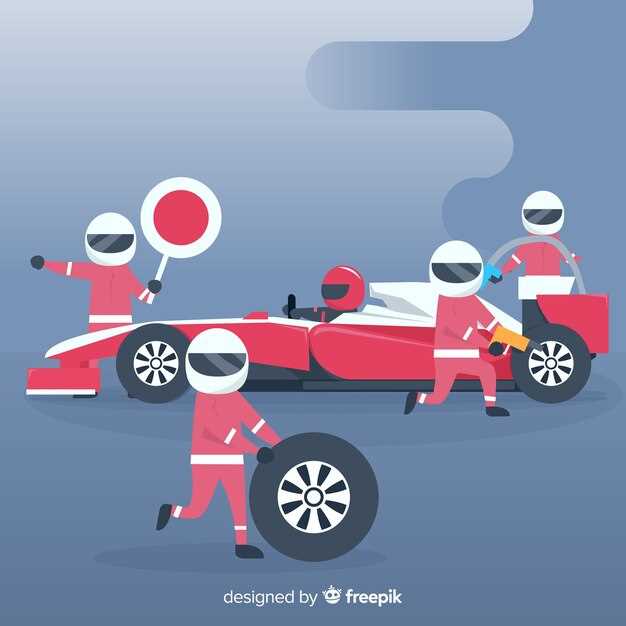
When it comes to showcasing your passion for motorsports, ensuring that your race car is perfectly prepped for shows and test drives is essential. To drive attention and admiration from spectators and potential buyers, every detail of your car must shine, both in appearance and performance. A well-prepared vehicle not only reflects your commitment but also enhances the overall experience for everyone involved.
Prep work is fundamental in making a lasting impression. Start by thoroughly cleaning and detailing your car’s exterior and interior. This includes polishing the paint, cleaning the wheels, and ensuring that the cockpit is free of clutter. A pristine appearance will capture the eyes of car enthusiasts and judges alike, making your vehicle stand out in any setting.
Equally important is the mechanical preparation of your race car. Ensuring that your car is in optimal condition helps to instill confidence in its performance during test drives. Regular maintenance checks on the engine, brakes, and tires are crucial. By meticulously reviewing these elements, you not only enhance your car’s drive quality but also demonstrate to potential buyers that it’s a reliable and well-cared-for machine.
Cleaning and Polishing: Making Your Car Shine

Preparing your race car for shows and test drives requires meticulous cleaning and polishing to ensure it stands out. A clean vehicle not only looks professional but also reflects the dedication you put into your craft.
Start by thoroughly washing the exterior with a pH-balanced car shampoo to remove dirt and grime. Use a microfiber wash mitt to avoid scratches, rinsing frequently. Pay attention to the wheel wells and undercarriage, as these areas can accumulate significant debris.
Once the car is washed, dry it using a soft microfiber towel to prevent water spots. For an extra level of shine, consider using a clay bar on the paint surface to eliminate embedded contaminants that regular washing cannot remove. This step enhances the paint’s smoothness and prepares it for waxing.
Applying a high-quality wax or sealant provides a protective layer on the surface, making it easier to maintain and enhancing its shine. Use an applicator pad to spread the wax evenly, allowing it to cure for the recommended time before buffing it off with a clean microfiber towel.
Don’t forget the windows and mirrors. Use a glass cleaner to create a streak-free finish, ensuring visibility during test drives. This attention to detail not only improves aesthetics but also boosts safety.
Finally, finish with a thorough inspection of the interior. Vacuum the carpets, wipe down surfaces, and polish any chrome or plastic components. A well-cleaned interior complements the exterior’s shine, making your race car ready for any show or drive. Proper prep in cleaning and polishing enhances your vehicle’s appearance and reflects your commitment to excellence.
Mechanical Checks: Ensuring Safety and Performance
Before showcasing your race car or taking it for a test drive, conducting thorough mechanical checks is paramount. These checks ensure not only the performance of the vehicle but also the safety of the driver and spectators.
1. Engine Inspection: Begin by examining the engine for any signs of wear or leaks. Check the oil and coolant levels, ensuring they meet the required specifications. A well-maintained engine is vital for optimal performance during a test drive.
2. Brake System Evaluation: The braking system is crucial for safe handling of the car. Inspect brake pads, rotors, and fluid levels. Test the responsiveness of the brakes to ensure they perform effectively under pressure.
3. Tire Condition: Assess tire tread depth and overall condition. Proper tire inflation and alignment are essential for stability and traction during high-speed maneuvers. A quick tire check can prevent potential accidents on the track.
4. Suspension System: Evaluate the suspension components, including shocks and struts. Ensure that they are in good working order to maintain proper handling during both shows and test drives. A well-functioning suspension contributes to better stability and control.
5. Electrical Systems: Check all electrical components, including the battery, lighting, and electronic controls. A fully operational electrical system enhances safety and allows for better responsiveness on the track.
6. Safety Equipment: Verify that all safety gear, such as seat belts, fire extinguishers, and roll cages, are installed and functioning properly. Safety equipment is critical for protecting the driver in the event of a mishap.
By diligently performing these mechanical checks, you can ensure that your race car is prepared for both display and test drives, enhancing its performance while prioritizing safety.
Logistics for Transport: Tips for Safe Delivery to Events

Transporting your race car requires careful planning and consideration to ensure a successful arrival at events. Start with selecting the right vehicle for transportation. A reliable and adequately sized trailer or transport truck is essential to accommodate your car safely during the drive.
Before you prep your car for transport, inspect it thoroughly. Ensure that all fluids are properly filled, tire pressures are optimal, and no parts are loose. This maintains not only the car’s integrity but also ensures safety during the journey.
Secure your car in the transport vehicle using high-quality tie-down straps. Make sure to fasten them at multiple points to prevent any movement during transport. Additionally, consider using wheel chocks to provide extra stability and avoid any potential rolling.
Plan your route ahead of time. Take into account factors such as traffic conditions, road types, and weather forecasts. Avoid routes that might expose your car to heavy vibrations or poor road conditions, as this could potentially cause damage.
Communicate with your transport team. Ensure everyone is aware of the car’s specifications and any special handling requirements. This teamwork will contribute to a smooth transport process and help avoid any mishaps.
Finally, monitor the transportation progress. Equip your transport vehicle with GPS tracking if possible. Regular updates on the journey allow you to address any issues immediately, ensuring your car arrives safely and on time for the event.



